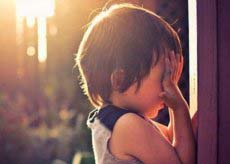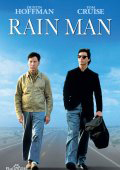纪录片《Autism is a World》
孤独内心也是个世界(Autism Is a World)

国家:美国
导演:Gerardine Wurzburg
长度:40分钟
这是Gerardine Wurzburg第二次获得奥斯卡提名,1992年她凭借“EDUCATING PETER”获得过奥斯卡最佳短片奖。
《孤独内心也是个世界》是一部关于孤独症儿童的记录片。苏患有孤独症,当你见到她的时候,她不会和你有眼神的交流。她一次次站在水龙头前看着水从自己手上流过。苏13岁时才被诊断并接受治疗,此时她才开始用键盘与他人交流,现在她已经是一名大学新生了。用苏自己的话说《孤独内心也是个世界》可以使观众了解她的想法、她的世界和她患孤独症的生活。
Synopsis:
She is her own worst nightmare. When you meet Sue, she does not make eye contact. She does not offer to shake your hand. She may fixate on the buttons of your shirt, but cannot say your name. Sue Rubin has autism, a complicated disorder that causes her to act in many strange ways. For researchers, doctors, and psychologists, autism is mysterious and complex, its causes and cures still unknown. But this is not a film about experts or theories. In Autism is a World, Sue takes the audience on an extraordinary journey inside autism to explain what she feels and does. How she relates to others. What it has been like to go to college and run her own life. This is a view of autism as it has rarely been seen--from the inside out.
As a child, Sue did not give her parents much hope. She hit herself. Pulled hair. Bit her own arms and hands. She could not speak. At age four, Sue's parents took her to UCLA to explore the possibility that she might have autistic tendencies. The answer was clear and quick: forget “tendencies,” Sue is severely autistic. As Sue interviews eminent Harvard researcher Margaret Bauman, we learn it is a disorder still barely understood.
Until she was 13, most believed Sue to be retarded. Repeated tests put her IQ at 29—“the level of a 2 year old.” Rita says that her hopes for Sue, then, were modest—to keep her out of an institution, to educate her in special classes, to someday help her get a job “cleaning tables off or something like that that retarded people do.” But then, just before she was 13, Sue’s psychologist, Jackie, introduced her to “facilitated communication.” Jackie and Rita worked with Sue tirelessly and, slowly the person trapped inside her silent, strange behavior began to communicate and to emerge into the world an aware, intelligent young woman. When Sue was retested months later, the results were stunning—a 133 IQ. Sue entered regular high school classes.
Today, Sue is a junior at Whittier College with a history major. We see her in class, hear how hard it is to control her behaviors during the lecture, and find that she loves learning. We watch as she painstakingly and independently types her words. And, we meet Aishling, a friend since high school, and, for the last 7 years, part of Sue’s complicated network of support staff who make her life possible.
Sue takes the audience through#p#分页标题#e# her daily life—through fun excursions to bet on the horses at Santa Anita, trips to the store to shop for groceries, and struggles to do what, for most, would be mundane tasks like making a salad or tying her shoes. We learn that Sue clutches at plastic spoons because they bring her comfort. We see her play for long stretches at the sink in a trickling flow of water during which, she says, the autistic side of her brain takes over. It is a startling juxtaposition—the clear, intelligent, articulate words of a woman who is behaving in the world in exceptionally strange ways.
Sue has become a tireless disability rights advocate. We watch her write a speech for a conference on autism. During the long process of writing, Sue’s support staffer Lisanne keeps her focused. Here, Sue demonstrates her wit, intelligence, and compassion. She starts by telling her audience, “If you think living with autism is difficult, try getting into college” and ends, in a tender moment, with a very personal offer to help others with autism who hope to follow in her footsteps.
As the film moves to its conclusion, it comes to a wrenching emotional climax. After years, it is time for Aishling and Lisanne to leave Sue’s staff and pursue other interests. In meetings with psychologist Jackie, with her mother, with staff coordinator Janine and with Aishling and Lisanne, it is clear that Sue is struggling and that the change is painful.
Sue shares her final thoughts as the film concludes. Her words are simple: “The last thing I want to clarify is that no matter how much social interaction one has, one will never be free of autism. The tendencies to be and act in certain ways may subside but I will always be autistic.”





